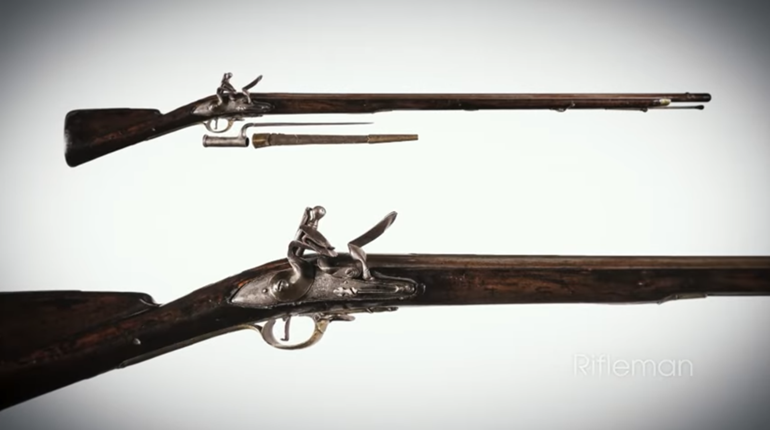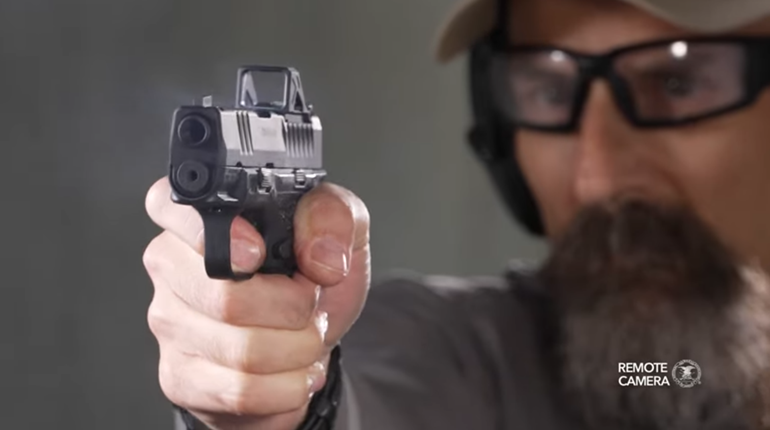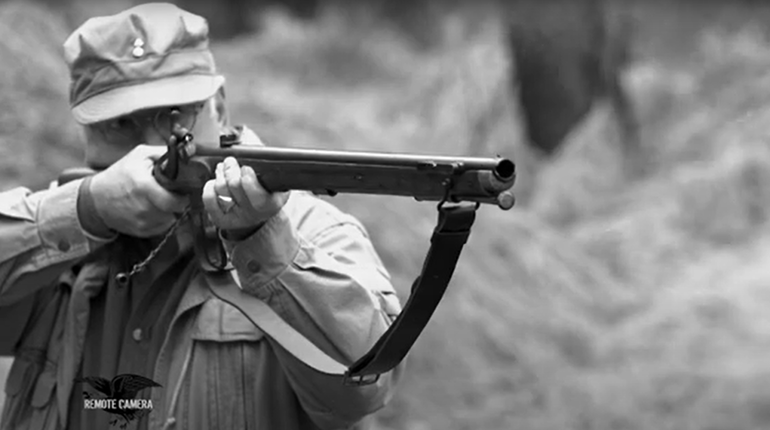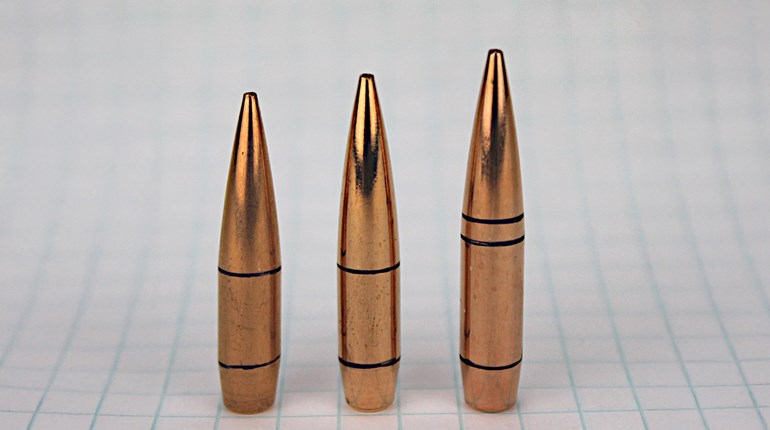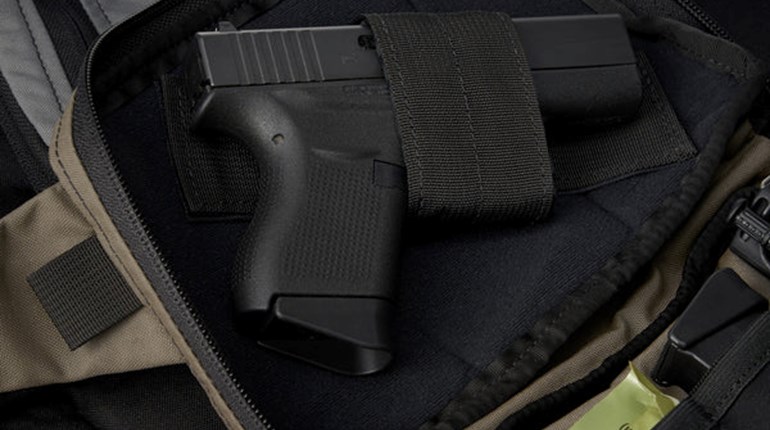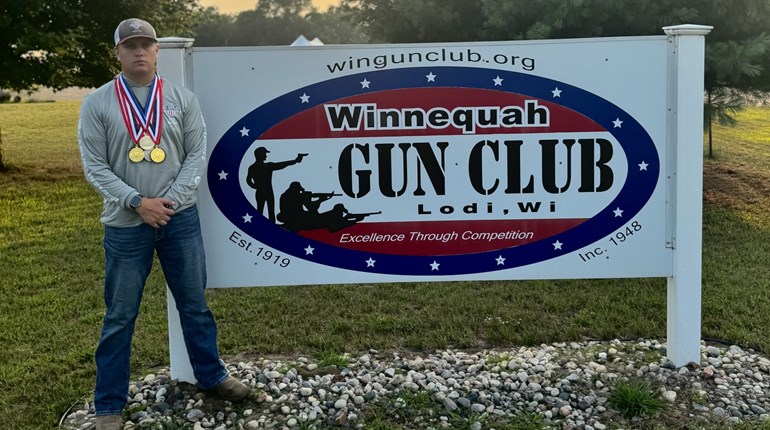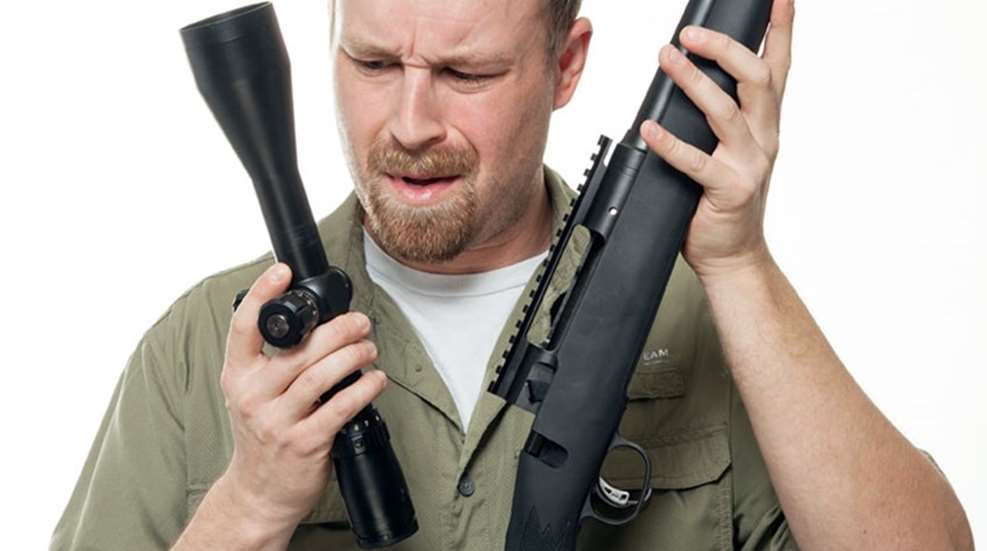
Fun fact about NRA's Publications division: About 10 percent of the editors have a fine, hair-thin scar through the eyebrow over their dominant eye. Whether you call it "scope bite," "scope eye" or even a "Bushveld tattoo," shooting a long gun with a scope can sometimes result in a sharp blow to the brow bone from the optic as the gun recoils back. It's a problem that experienced shooters and newbies alike can experience from time to time—and it can be enough to make some people "gun shy" (if you'll forgive the phrase). It doesn’t have to be that way, though; as long as you follow a few precautionary steps, you’ll be just fine. Part of it is about assembling a shooting system—the correlation of shooter to gun and optic—that works for your intended purpose and your personal physique. Part of it is about your handling of the shooting system.
The Fit
No two shooters are the same. And with that there are some rather specific guidelines to follow when selecting a rifle and its intended purpose. Your ideal shooting system doesn’t necessarily have to begin with expensive gear. There are lots of options out there that will fit your budget.However, for new shooters, we need to talk about more than the monetary investment.
First, we have to talk about recoil, because that's part of what causes "scope bite." How a rifle distributes recoil a combination of several variables. The trick is to match those variables to the shooter. The variables include: bore axis in relation to the stock (high bore axis means more perceived recoil); stock design (wood and composite stocks will transfer energy to the shooter differently); stock fit to the shooter (a good fit will limit the physical effects of perceived recoil); scope selection and custom scope installation matched to the shooter (ensures safe shooting and proper form); cartridge selection for intended purpose along with load selection (which offers variances in recoil energy).
Form and Function
Learning to properly mount, hold and fire a rifle that has been sized appropriately is critical. When you watch an Olympic high jumper, notice he/she delivers exacting form each and every time—that same notion of form is necessary to deliver repeatable accuracy from your shooting system. Proper form will also reduce the physical effects of recoil.
Selecting and Mounting the Scope
For new shooters with less-than perfect-form, selecting a scope with generous eye relief is critical. (Simply put, eye relief is the distance between the eye and the sight or scope.) This will provide for a larger buffer zone between the shooter's eye/face and the scope. In addition to eye relief, optics magnification tends to affect how critical a shooter must be with regard to form—lesser magnification allows leniency when it comes to eye relief and face positioning. The more magnification a scope has, the harder it can be to shoot while developing proper form.
Orienting a scope on a rifle begins with highlighting the shooter's physique and natural hold of the gun. Many factors add into the equation, but simply starting with a rifle that properly fits the shooter is critical. With the optic set in the middle of its power range, begin first with the scope loose in its rings, yet snug enough to keep from slipping around. (Having an extra set of hands for this process will help.) Next ,you will want to get in and out of a comfortable shooting position at least five to 10 times while keeping your eyes closed. On the last gun mount, hold the position and open your eyes. This is where the extra set of hands comes in to adjust the scope fore and aft until a clear image filling the entire lens is visible. Now the scope should be marked for this position with a piece of tape, followed by the proper steps to secure and level it to the rifle.
Things that will indicate poor scope installation:
- Having to lift the face to see through the optic means either the scope rings are not of proper height, and/or an adjustment to the stock’s comb height is needed.
- Dark shadows or edges means the sight picture is not perfect. Adjusting eye relief or the scope's position in the rings may be needed.
- Shots that stray from normal grouping may be result of scope rings that are either too tight or loose.
- Crooked crosshair (reticle) may be the result of a scope that was not leveled in relationship to the action and, potentially, the shooter's form.
- No more adjustment left in the scope's adjustment dial may be due to the scope not being aligned with the bore’s axis.
Putting it all Together
I’ve shot some of the biggest caliber guns in the world, and yes, they can hurt, even with finely-honed shooting skills. For developing shooters, the last thing I would recommend is that you get started behind the stock of a rifle chambered for .458 Lott or even a .30-cal. magnum...at least until your shooting form is developed to properly absorb sharp recoil. Shooting guns doesn’t have to be painful. When armed with accurate knowledge and the proper skills, it can provide for years and years of painless fun. Additionally there are still a few more pieces to the puzzle that can better help. Connecting all of the dots is fundamental in providing a system of confidence you can take to the range or into the field.
Here are a few additional tips:
- Absorb the shot rather than fight it.
- Stand aggressively and partly square to the target, almost like you are about to take off running while on the balls of your feet.
- Look for a gun that has a generously thick and squishy rubber buttplate.
- Installation of a muzzle brake will reduce the recoil impulse felt by the shooter.
- Use a gun sling to help minimize muzzle rise and the potential for scope bite.
- Lighter isn’t always better. Heavier guns tend to recoil less.
- Shoot standing up—firing from a benchrest or prone position sure feels nice and steady, but it orients the shooter into the worst position for absorbing recoil.
- Shooting rests like Caldwell’s Lead Sled will help with recoil during bench shooting.
- Reduced-recoil loads from respected ammunition companies will greatly reduce the gun’s felt recoil.













